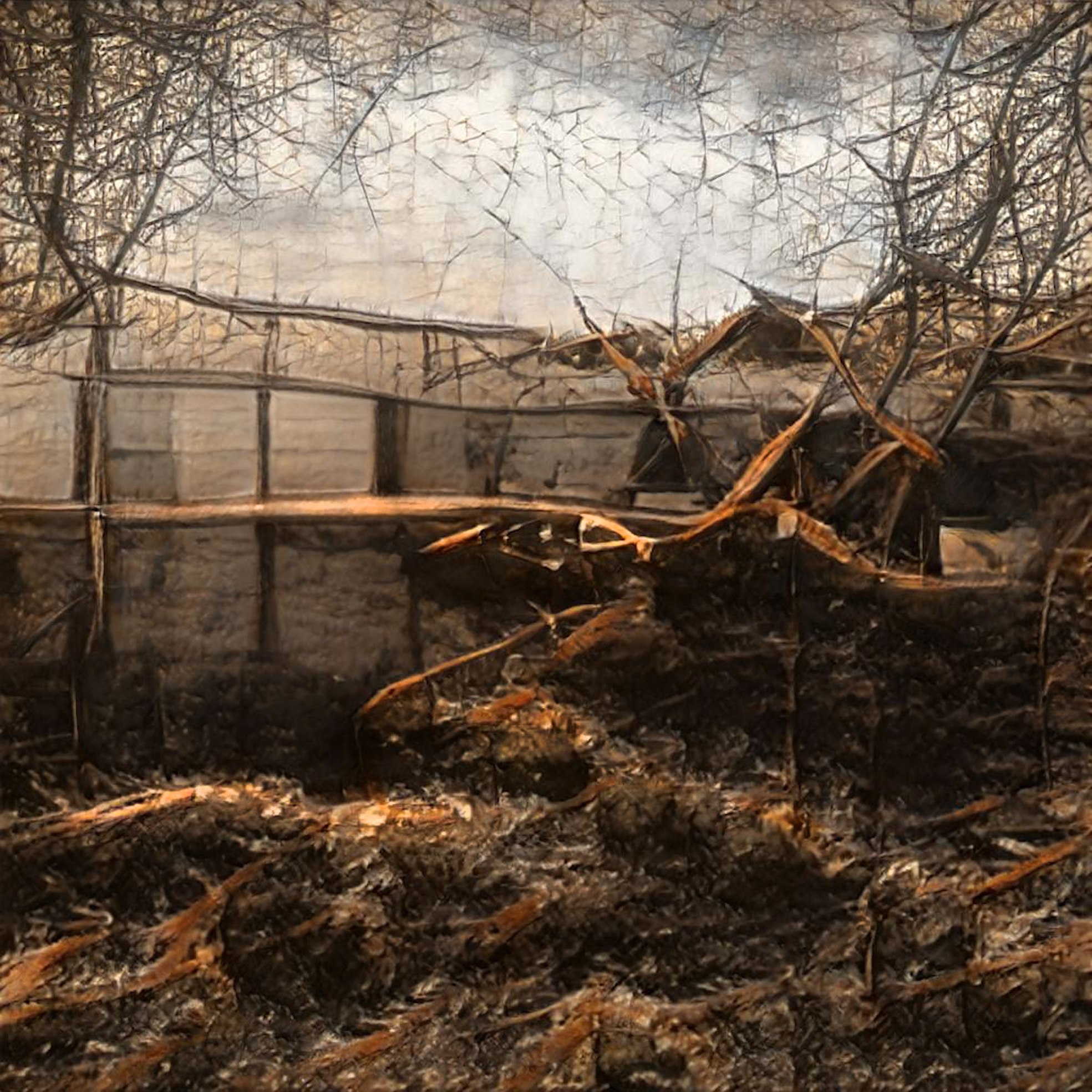Catastrophe Jangled Hideously Out of Process consists of images generated from machine learning algorithms that were trained on hundreds of images of post disaster scenarios from recent years – tsunamis, hurricanes, earthquakes, landslides, plane crashes, wildfires and war. The saturation of news media with such imagery has led to a certain desensitization, while simultaneously our fetishism makes us desire more, our gaze becoming trapped in this reality made strange. The commonplace is transformed into the transcendentally horrific, as the competitive need to grab our attention forces the media to lead with ever more grisly and violent material, the images that make us stop in our tracks. The barrage of such images eventually results in the psychological phenomena known as the “collapse of compassion” and “compassion fatigue”. A loss of emotional connection can coincide with a desire to see more of the same kind of imagery. The contemporary media methodology is to distort, break down into parts and pull apart disaster scenarios in order to eke out something sensational from it, a fetishisation of disaster and tragedy. The content is often distributed rapidly through social media and becomes viral, pervading our everyday imaginations and conversations. While making us feel safe by comparison, a simultaneous sensation of guilt appears as we observe the vast difference between our privilege and someone else’s misfortune. The more we witness suffering, the more we are aware that we are not suffering.
However, there is also beauty in these pictures. Apart from our seduction by the horrific, there are abstract tones and forms and qualities in the aesthetic of destruction that are painterly, cinematic and beautiful. Our unease is piqued by the knowledge that our aesthetic satisfaction comes at the cost of great human suffering. So, how could we appease these compulsions of ours ‘ethically’? How can we satisfy our enjoyment of the aesthetic of disaster without having to take into account the human cost? Is there a way to separate aesthetics from humanity? By generating images of disaster from which the sensationalism has been removed at the point of origin we arrive at a satisfying moment of guilt free aesthetic.
The project probes into how we produce and consume images, what kind of visual material excites us and our relationship with the image as a representation of the world. It fits within the arc of The Haunting Series, expressing and representing the presence of existential threats. Catastrophe Jangled Hideously Out of Process adds an extra twist to this narrative, with both its title and its content generated by forms of artificial intelligence – which is in itself considered one of the existential threats that we face.
Opening
Wednesday, January 19, 2022, xcenter, Nova Gorica, at 6 p.m.
The opening will be accompanied by the management of Tjaša Pogačar.
Interview with the artist: Thursday, February 10, 2022, at 7 p.m.
Credits
Artist Andy Gracie
Artwork Catastrophe Jangled Hideously Out Of Process, 2021
Production of the artwork Zavod Projekt Atol
Production of the exhibition in Xcenter (Nova gorica, SI) is part of konS:: Platform for Contemporary Investigative Art.
Info
Artist’s website: https://www.hostprods.net
Artist on Instagram: @hostprods
Artist on Facebook: https://www.facebook.com/andy.gracie.9
Zavod Projekt Atol website:http://projekt-atol.si/en
Zavod Projekt Atol IG: @projektatol
Zavod Projekt Atol FB: https://www.facebook.com/ProjektAtol
CV
Andy Gracie works on the intersection of art and science and within various disciplines such as installation, robotics, sound, video and biology.
His artistic practice is characterised by an in depth engagement with process, scientific methodologies and the nature of experiment. Here ‘experiment’ refers both to the act of acquiring knowledge and information through testing scenarios, and to the act of trying out unknown or untested processes. He is interested in how as humans we imagine, simulate and inhabit scenarios that test our understanding and our imagination of the future. The current expression of these ideas is in a body of work that outlines the psychology, culture and aesthetics of disaster and the impermanence of humanity on a cosmic scale.
